Fort Beauséjour on:
[Wikipedia]
[Google]
[Amazon]
Fort Beauséjour (), renamed Fort Cumberland in 1755, is a large, five-
Parks Canada
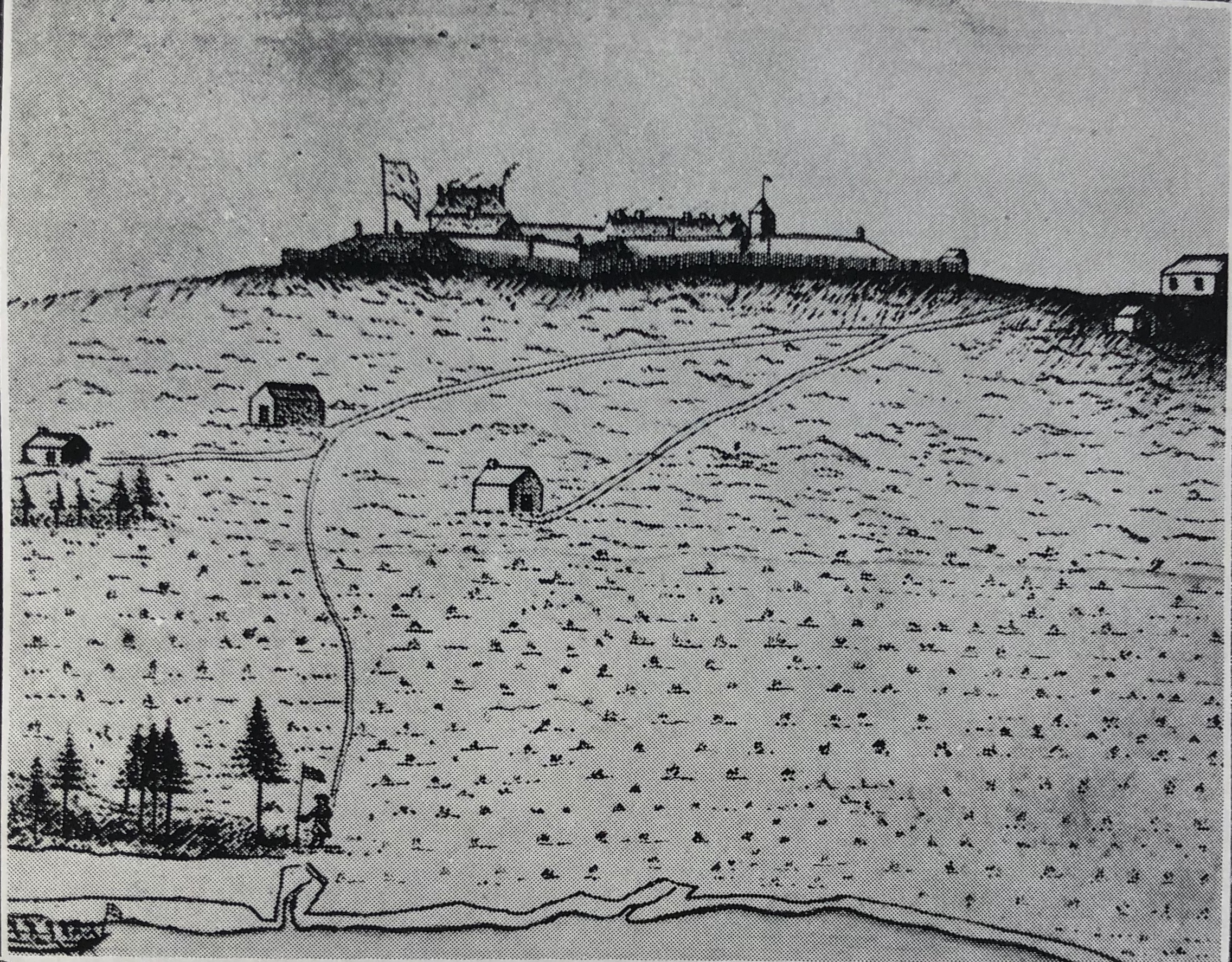 During the 1600s and 1700s, European monarchies were nearly continuously at war with each other. The threat of Anglo-American invasion of
During the 1600s and 1700s, European monarchies were nearly continuously at war with each other. The threat of Anglo-American invasion of
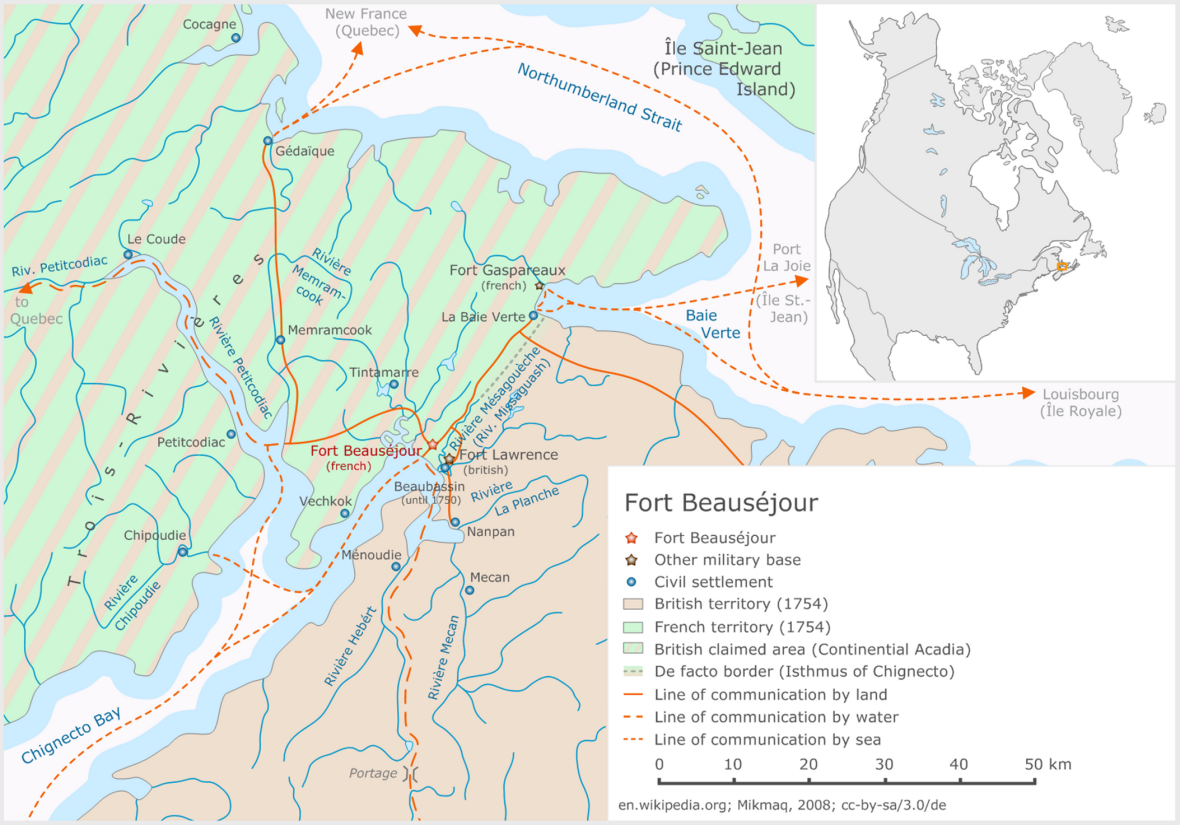 As tensions escalated, in 1749 the British erected fortifications in Nova Scotia at Citadel Hill, Halifax, which they founded as a town; and at
As tensions escalated, in 1749 the British erected fortifications in Nova Scotia at Citadel Hill, Halifax, which they founded as a town; and at 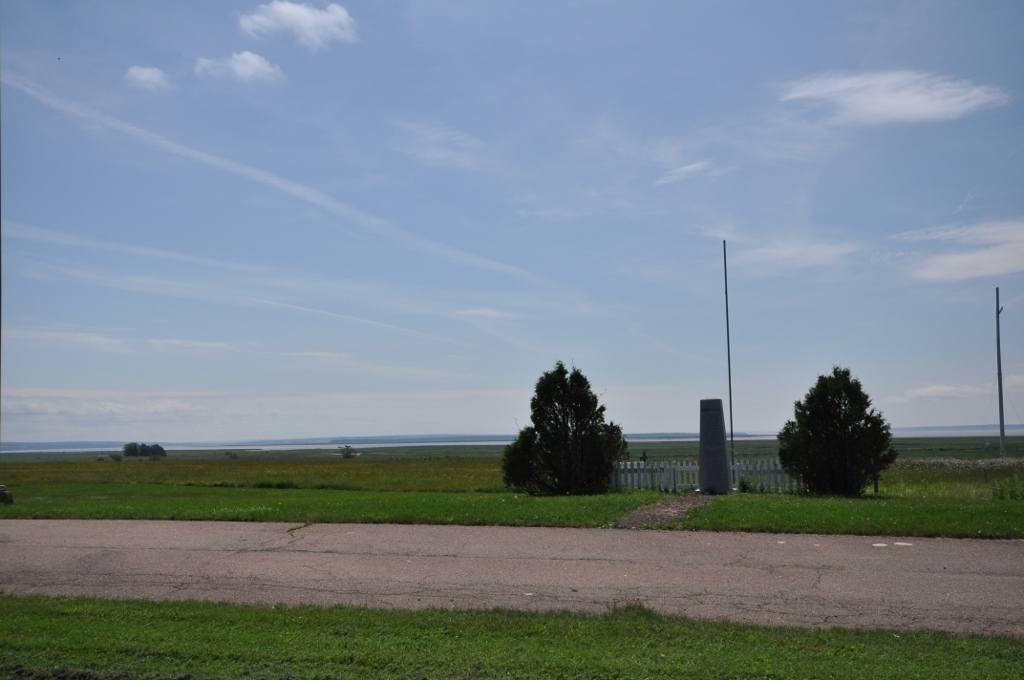 In 1750 the French added to the military personnel in their colony. In April of that year Governor
In 1750 the French added to the military personnel in their colony. In April of that year Governor  In November 1750 Governor General de la Jonquière ordered that two forts be built at either end of the Isthmus of Chignecto to block the British: one was Fort Gaspareaux on the
In November 1750 Governor General de la Jonquière ordered that two forts be built at either end of the Isthmus of Chignecto to block the British: one was Fort Gaspareaux on the
 A convoy of 31 transports and three warships left
A convoy of 31 transports and three warships left 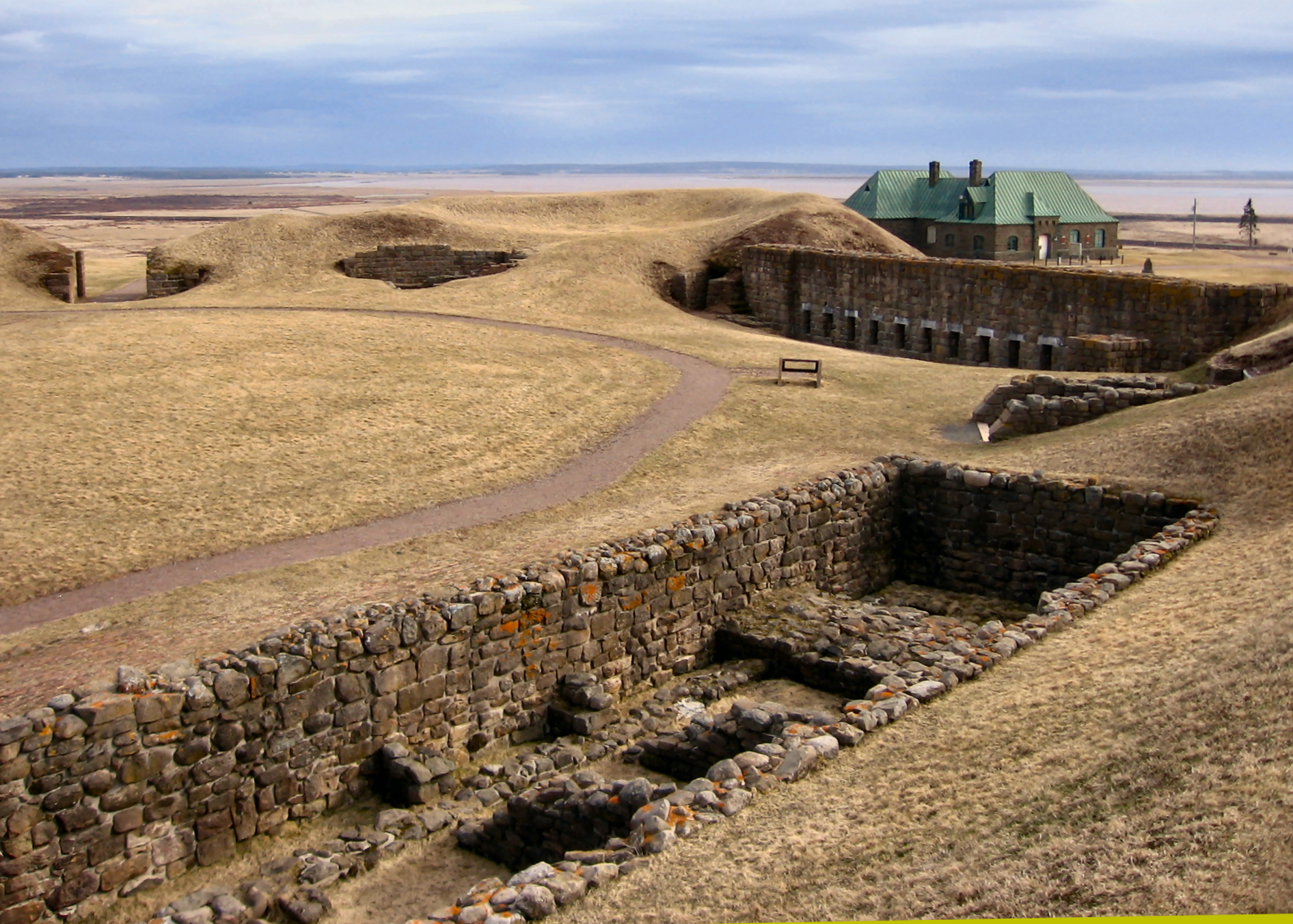
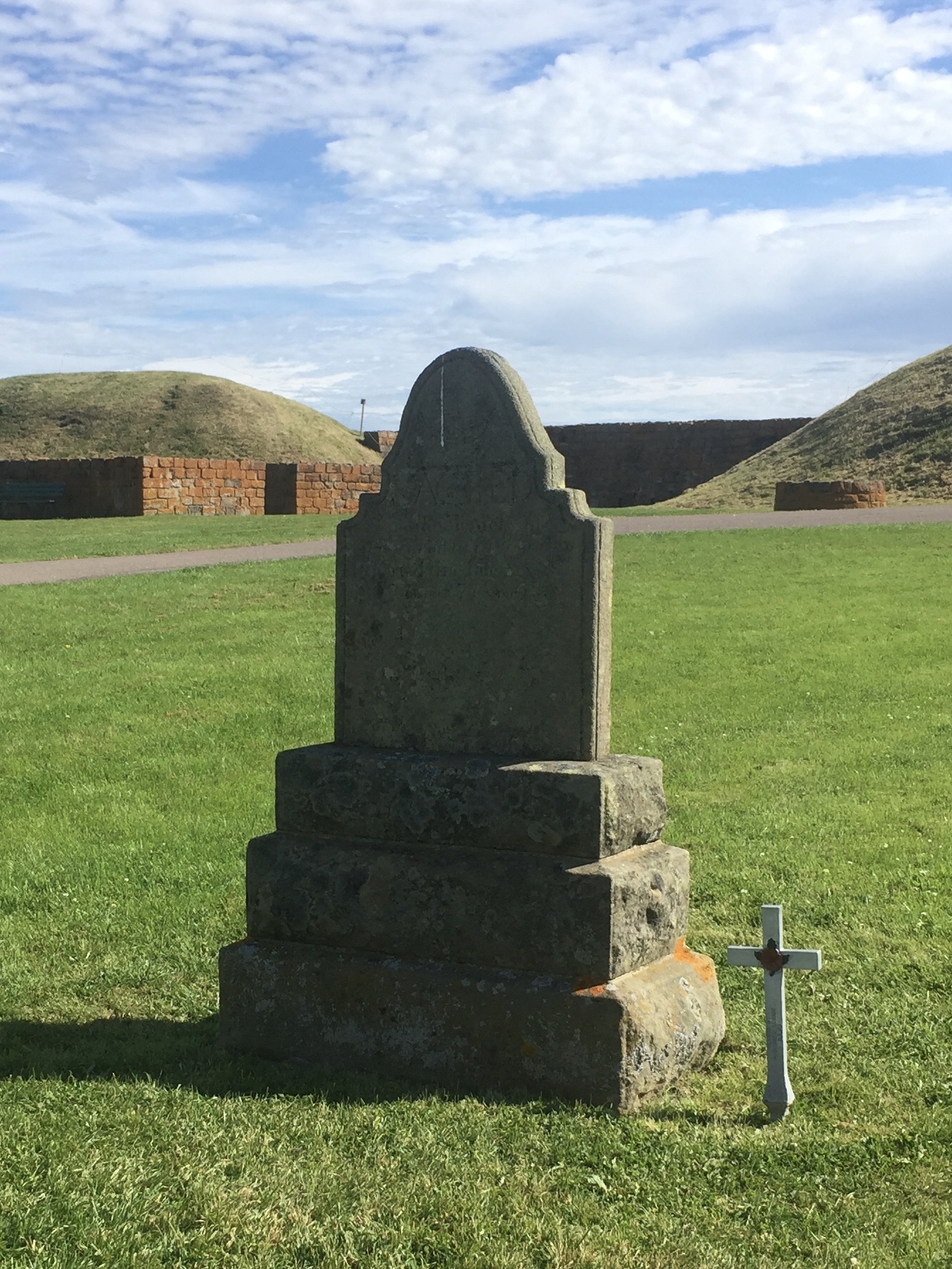 Under the leadership of French officer Boishébert, Acadians and Mi'kmaq fought the expulsion from their homeland. In the early spring of 1756, a band of Acadian and Mi'kmaq partisans ambushed a small party of New England soldiers' cutting wood for Fort Cumberland, killing and mutilating nine men. In April 1757, after raiding Fort Edward, a band of Acadian and Mi'kmaq partisans also raided Fort Cumberland, killing and scalping two men and taking two prisoners. In July, Mi'kmaq captured two of Gorham's rangers outside Fort Cumberland. In March 1758, forty Acadian and Mi'kmaq attacked a schooner at Fort Cumberland and killed its master and two sailors. In the winter of 1759, five British soldiers on patrol were ambushed while crossing a bridge near Fort Cumberland. They were
Under the leadership of French officer Boishébert, Acadians and Mi'kmaq fought the expulsion from their homeland. In the early spring of 1756, a band of Acadian and Mi'kmaq partisans ambushed a small party of New England soldiers' cutting wood for Fort Cumberland, killing and mutilating nine men. In April 1757, after raiding Fort Edward, a band of Acadian and Mi'kmaq partisans also raided Fort Cumberland, killing and scalping two men and taking two prisoners. In July, Mi'kmaq captured two of Gorham's rangers outside Fort Cumberland. In March 1758, forty Acadian and Mi'kmaq attacked a schooner at Fort Cumberland and killed its master and two sailors. In the winter of 1759, five British soldiers on patrol were ambushed while crossing a bridge near Fort Cumberland. They were
bastion
A bastion or bulwark is a structure projecting outward from the curtain wall of a fortification, most commonly angular in shape and positioned at the corners of the fort. The fully developed bastion consists of two faces and two flanks, with fi ...
ed fort
A fortification is a military construction or building designed for the defense of territories in warfare, and is also used to establish rule in a region during peacetime. The term is derived from Latin ''fortis'' ("strong") and ''facere'' ...
on the Isthmus of Chignecto
The Isthmus of Chignecto is an isthmus bordering the Maritime provinces of New Brunswick and Nova Scotia that connects the Nova Scotia peninsula with North America.
The isthmus separates the waters of Chignecto Bay, a sub-basin of the Bay o ...
in eastern Canada, a neck of land connecting the present-day province of New Brunswick
New Brunswick (french: Nouveau-Brunswick, , locally ) is one of the thirteen provinces and territories of Canada. It is one of the three Maritime provinces and one of the four Atlantic provinces. It is the only province with both English and ...
with that of Nova Scotia
Nova Scotia ( ; ; ) is one of the thirteen provinces and territories of Canada. It is one of the three Maritime provinces and one of the four Atlantic provinces. Nova Scotia is Latin for "New Scotland".
Most of the population are native Eng ...
. The site was strategically important in Acadia
Acadia (french: link=no, Acadie) was a colony of New France in northeastern North America which included parts of what are now the Maritime provinces, the Gaspé Peninsula and Maine to the Kennebec River. During much of the 17th and earl ...
, a French colony that included primarily the Maritimes
The Maritimes, also called the Maritime provinces, is a region of Eastern Canada consisting of three provinces: New Brunswick, Nova Scotia, and Prince Edward Island. The Maritimes had a population of 1,899,324 in 2021, which makes up 5.1% of C ...
, the eastern part of Quebec, and northern Maine
Maine () is a state in the New England and Northeastern regions of the United States. It borders New Hampshire to the west, the Gulf of Maine to the southeast, and the Canadian provinces of New Brunswick and Quebec to the northeast and nor ...
of the later United States. The fort was built by the French from 1751 to 1752. They surrendered it to the British in 1755 after their defeat in the Battle of Fort Beauséjour
The Battle of Fort Beauséjour was fought on the Isthmus of Chignecto and marked the end of Father Le Loutre's War and
the opening of a British offensive in the Acadia/Nova Scotia theatre of the Seven Years' War, which would eventually lead to t ...
, during the Seven Years' War
The Seven Years' War (1756–1763) was a global conflict that involved most of the European Great Powers, and was fought primarily in Europe, the Americas, and Asia-Pacific. Other concurrent conflicts include the French and Indian War (1754 ...
. The British renamed the structure as Fort Cumberland. The fort was strategically important throughout the Anglo-French rivalry of 1749–63, known as the French and Indian Wars by British colonists. Less than a generation later, it was the site of the 1776 Battle of Fort Cumberland, when the British forces repulsed sympathisers of the American Revolution
The American Revolution was an ideological and political revolution that occurred in British America between 1765 and 1791. The Americans in the Thirteen Colonies formed independent states that defeated the British in the American Revoluti ...
.
Since 1920 the site has been designated as a National Historic Site of Canada
National Historic Sites of Canada (french: Lieux historiques nationaux du Canada) are places that have been designated by the federal Minister of the Environment on the advice of the Historic Sites and Monuments Board of Canada (HSMBC), as being ...
, named the Fort Beauséjour – Fort Cumberland National Historic Site. Portions of the fort have been restored, and a museum and visitor facilities were added to the site. It attracts about 6000 visitors annually.Fort Beauséjour – Fort Cumberland National Historic Site of CanadaParks Canada
Historical context
 During the 1600s and 1700s, European monarchies were nearly continuously at war with each other. The threat of Anglo-American invasion of
During the 1600s and 1700s, European monarchies were nearly continuously at war with each other. The threat of Anglo-American invasion of New France
New France (french: Nouvelle-France) was the area colonized by France in North America, beginning with the exploration of the Gulf of Saint Lawrence by Jacques Cartier in 1534 and ending with the cession of New France to Great Britain and Spa ...
was constant, as England tried to establish power in North America, and Acadia was particularly vulnerable to attacks by water. Its capital, Port-Royal Port Royal is the former capital city of Jamaica.
Port Royal or Port Royale may also refer to:
Institutions
* Port-Royal-des-Champs, an abbey near Paris, France, which spawned influential schools and writers of the 17th century
** Port-Royal Ab ...
, was founded in 1605, destroyed by the British in 1613, moved upstream in 1632, besieged by the British in 1707, and finally taken in the Siege of Port Royal (1710)
The siege of Port Royal (5–13 October 1710),Dates in this article are given in the New Style; many older English accounts use Old Style dates for this action: 24 September to 2 October also known as the Conquest of Acadia, was a military sie ...
.
Under the terms of the 1713 Treaty of Utrecht
The Peace of Utrecht was a series of peace treaties signed by the belligerents in the War of the Spanish Succession, in the Dutch city of Utrecht between April 1713 and February 1715. The war involved three contenders for the vacant throne ...
, the Kingdom of France
The Kingdom of France ( fro, Reaume de France; frm, Royaulme de France; french: link=yes, Royaume de France) is the historiographical name or umbrella term given to various political entities of France in the medieval and early modern period. ...
had ceded to the Kingdom of Great Britain
The Kingdom of Great Britain (officially Great Britain) was a sovereign country in Western Europe from 1 May 1707 to the end of 31 December 1800. The state was created by the 1706 Treaty of Union and ratified by the Acts of Union 1707, wh ...
the territory known today as mainland Nova Scotia. The treaty stated that France retained control of Île Royale
The Salvation Islands (french: Îles du Salut, so called because the missionaries went there to escape plague on the mainland; sometimes mistakenly called Safety Islands) are a group of small islands of volcanic origin about off the coast of Fre ...
(now Cape Breton Island
Cape Breton Island (french: link=no, île du Cap-Breton, formerly '; gd, Ceap Breatainn or '; mic, Unamaꞌki) is an island on the Atlantic coast of North America and part of the province of Nova Scotia, Canada.
The island accounts for 18. ...
) and Île Saint-Jean (Prince Edward Island
Prince Edward Island (PEI; ) is one of the thirteen provinces and territories of Canada. It is the smallest province in terms of land area and population, but the most densely populated. The island has several nicknames: "Garden of the Gulf", ...
). France's colony Canada, or New France, extended from the Gaspé Peninsula
The Gaspé Peninsula, also known as Gaspesia (; ), is a peninsula along the south shore of the Saint Lawrence River that extends from the Matapedia Valley in Quebec, Canada, into the Gulf of Saint Lawrence. It is separated from New Brunswick ...
in the east to Quebec in the west. The treaty of Utrecht defined neither which nation had sovereignty over the land between Gaspesie and Nova Scotia, now New Brunswick, nor the western border of Nova Scotia. The ''de facto'' border became the Isthmus of Chignecto at the Missiguash River, site of the prosperous Acadian settlement Beaubassin
Beaubassin was an important Acadian village and trading centre on the Isthmus of Chignecto in what is now Nova Scotia, Canada. The area was a significant place in the geopolitical struggle between the British and French empires. It was establ ...
.
In the mid-1700s France and Britain were about to clash worldwide and in North America in the Seven Years' War
The Seven Years' War (1756–1763) was a global conflict that involved most of the European Great Powers, and was fought primarily in Europe, the Americas, and Asia-Pacific. Other concurrent conflicts include the French and Indian War (1754 ...
. By the middle of the 1700s, over one million British colonists occupied a limited area along the Atlantic coast, but the primarily ethnic French population of what is now The Maritimes was 18,544, part of a total New France population of 70,000.
Fort Beauséjour
 As tensions escalated, in 1749 the British erected fortifications in Nova Scotia at Citadel Hill, Halifax, which they founded as a town; and at
As tensions escalated, in 1749 the British erected fortifications in Nova Scotia at Citadel Hill, Halifax, which they founded as a town; and at Fort Sackville
During the 18th and early 19th centuries, the French, British and U.S. forces built and occupied a number of forts at Vincennes, Indiana. These outposts commanded a strategic position on the Wabash River. The names of the installations were chan ...
, Bedford
Bedford is a market town in Bedfordshire, England. At the 2011 Census, the population of the Bedford built-up area (including Biddenham and Kempston) was 106,940, making it the second-largest settlement in Bedfordshire, behind Luton, whilst t ...
. The French rebuilt the Fortress of Louisbourg
The Fortress of Louisbourg (french: Forteresse de Louisbourg) is a National Historic Site and the location of a one-quarter partial reconstruction of an 18th-century French fortress at Louisbourg on Cape Breton Island, Nova Scotia. Its two siege ...
, and re-occupied Fort Nerepis as part of their defences.
 In 1750 the French added to the military personnel in their colony. In April of that year Governor
In 1750 the French added to the military personnel in their colony. In April of that year Governor Edward Cornwallis
Edward Cornwallis ( – 14 January 1776) was a British career military officer and was a member of the aristocratic Cornwallis family, who reached the rank of Lieutenant General. After Cornwallis fought in Scotland, putting down the Jacob ...
of Nova Scotia sent British Major Charles Lawrence with a small force to establish British authority in the isthmus of Chignecto. On the north bank of the Missaguash River, Lawrence found French forces under Louis de La Corne, who had orders to prevent any British advance beyond that point. De La Corne evacuated and burned the village of Beaubassin to prevent its aiding the British. Rather than fight the French, with whom the British were not at war, or admit to any territorial limitation, Lawrence withdrew.
Officials in London disagreed about how far to direct actions of troops in establishing national claims during a time of peace. But Cornwallis eventually sent Lawrence to the Missaguash River with a stronger force and they routed a group of Abenaki and allied Indians led by Father Le Loutre, a French agent provocateur. In the autumn of 1750 Lawrence built Fort Lawrence near the site of the ruined village of Beaubassin.
 In November 1750 Governor General de la Jonquière ordered that two forts be built at either end of the Isthmus of Chignecto to block the British: one was Fort Gaspareaux on the
In November 1750 Governor General de la Jonquière ordered that two forts be built at either end of the Isthmus of Chignecto to block the British: one was Fort Gaspareaux on the Northumberland Strait
The Northumberland Strait (French: ''détroit de Northumberland'') is a strait in the southern part of the Gulf of Saint Lawrence in eastern Canada. The strait is formed by Prince Edward Island and the gulf's eastern, southern, and western ...
and the other Fort Beauséjour on the Bay of Fundy
The Bay of Fundy (french: Baie de Fundy) is a bay between the Canadian provinces of New Brunswick and Nova Scotia, with a small portion touching the U.S. state of Maine. It is an arm of the Gulf of Maine. Its extremely high tidal range is t ...
.
Construction began in April 1751 under the direction of Lieutenant Gaspard-Joseph Chaussegros de Léry. By 1751 the gunpowder magazine
A gunpowder magazine is a magazine (building) designed to store the explosive gunpowder in wooden barrels for safety. Gunpowder, until superseded, was a universal explosive used in the military and for civil engineering: both applications ...
, a well, four casemates
A casemate is a fortified gun emplacement or armored structure from which guns are fired, in a fortification, warship, or armoured fighting vehicle.Webster's New Collegiate Dictionary
When referring to antiquity, the term "casemate wall" mea ...
, and officers' quarters were finished. The barracks
Barracks are usually a group of long buildings built to house military personnel or laborers. The English word originates from the 17th century via French and Italian from an old Spanish word "barraca" ("soldier's tent"), but today barracks are u ...
were added the following year. By 1753 the fort had palisade
A palisade, sometimes called a stakewall or a paling, is typically a fence or defensive wall made from iron or wooden stakes, or tree trunks, and used as a defensive structure or enclosure. Palisades can form a stockade.
Etymology
''Palisade ...
walls and a earthwork. It was a pentagon-shaped fort
A fortification is a military construction or building designed for the defense of territories in warfare, and is also used to establish rule in a region during peacetime. The term is derived from Latin ''fortis'' ("strong") and ''facere'' ...
with bastion
A bastion or bulwark is a structure projecting outward from the curtain wall of a fortification, most commonly angular in shape and positioned at the corners of the fort. The fully developed bastion consists of two faces and two flanks, with fi ...
s built of earth and pickets at the corners.
In 1754, Louis Du Pont Duchambon de Vergor became the commander of Fort Beausejour. Events eventually revealed that he was unfit for military command. Louis-Léonard Aumasson de Courville, who became Vergor's secretary at Beauséjour claimed that Vergor was "avaricious in the extreme," and in his memoirs is a quotation attributed to François Bigot
François Bigot (; born Bordeaux, 30 January 1703; died Neuchâtel, Switzerland, 12 January 1778) was a French government official. He served as the Financial Commissary on Île Royale (nowadays Cape Breton Island), commissary general of the ill-f ...
: "Profit, my dear Vergor, by your opportunity t Beauséjour trim, – cut – you have the power – in order that you may soon join me in France and purchase an estate near me."
Battle of Fort Beauséjour
The French position may have been undermined byThomas Pichon
Thomas Pichon (30 March 1700 – 22 November 1781), also known as Thomas Tyrell, was a French government agent during Father Le Loutre's War. Pichon is renowned for betraying the French, Acadian and Mi’kmaq forces by providing information to t ...
, a clerk at the fort. The British commandant at Fort Lawrence paid Pichon for information about French activities. Pichon provided accounts of French activities, plans of forts and an outline of the steps necessary for capture, which Lieutenant-Colonel Robert Monckton later used in the attacks. Pichon delayed the strengthening of Beauséjour by advising that the British would not attack that year.
 A convoy of 31 transports and three warships left
A convoy of 31 transports and three warships left Boston
Boston (), officially the City of Boston, is the state capital and most populous city of the Commonwealth of Massachusetts, as well as the cultural and financial center of the New England region of the United States. It is the 24th- mo ...
on 19 May 1755, carrying nearly 2,000 New England
New England is a region comprising six states in the Northeastern United States: Connecticut, Maine, Massachusetts, New Hampshire, Rhode Island, and Vermont. It is bordered by the state of New York to the west and by the Canadian provinces ...
provincial troops and 270 British regulars, and dropped anchor near the mouth of the Missaguash River on 2 June. The next day the troops, under the command of Lieutenant-Colonel Robert Monckton of the regular army, disembarked a few kilometres from Fort Beauséjour. To defend the fort, Commander Louis Du Pont Duchambon de Vergor had only 150 soldiers from the Compagnies franches de la Marine and a dozen canonniers-bombardiers. On June 16, a large English bomb went through the roof of a casemate and killed many of its occupants. Vergor laid down his weapons. The fort was surrendered, and renamed Fort Cumberland. The next day Fort Gaspereau was surrendered without being attacked. The fall of these forts settled the boundary dispute in favour of the British and marked the beginning of the Expulsion of the Acadians.
The minister of Marine, Machault, had good reason to believe the forts had been "very ill defended" and Vergor was summoned before a court martial
A court-martial or court martial (plural ''courts-martial'' or ''courts martial'', as "martial" is a postpositive adjective) is a military court or a trial conducted in such a court. A court-martial is empowered to determine the guilt of memb ...
at Quebec in September 1757 but was acquitted.

Fort Cumberland
In the months following the fort's capture, British forces ordered Acadians living in the region to sign an oath of allegiance to the British Crown. However, the Acadians refused, preferring to remain neutral. Some Acadians reported that they had been coerced into assisting in the defense of Fort Beauséjour, and the British used this as a reason to begin theExpulsion of the Acadians
The Expulsion of the Acadians, also known as the Great Upheaval, the Great Expulsion, the Great Deportation, and the Deportation of the Acadians (french: Le Grand Dérangement or ), was the forced removal, by the British, of the Acadian peo ...
. Acadian homes were burnt to prevent their return. As the British army had relocated to Fort Cumberland, they abandoned and burned Fort Lawrence in October 1756. Fort Cumberland became one of the sites in which the British imprisoned or temporarily held Acadians during the nine years of the expulsion, the others being Fort Edward (Nova Scotia)
Fort Edward is a National Historic Site of Canada in Windsor, Nova Scotia, (formerly known as Pisiguit) and was built during Father Le Loutre's War (1749-1755). The British built the fort to help prevent the Acadian Exodus from the region. The ...
; Fort Frederick, Saint John, New Brunswick
Saint John is a seaport city of the Atlantic Ocean located on the Bay of Fundy in the province of New Brunswick, Canada. Saint John is the oldest incorporated city in Canada, established by royal charter on May 18, 1785, during the reign of ...
, and Fort Charlotte, Georges Island, Halifax.
 Under the leadership of French officer Boishébert, Acadians and Mi'kmaq fought the expulsion from their homeland. In the early spring of 1756, a band of Acadian and Mi'kmaq partisans ambushed a small party of New England soldiers' cutting wood for Fort Cumberland, killing and mutilating nine men. In April 1757, after raiding Fort Edward, a band of Acadian and Mi'kmaq partisans also raided Fort Cumberland, killing and scalping two men and taking two prisoners. In July, Mi'kmaq captured two of Gorham's rangers outside Fort Cumberland. In March 1758, forty Acadian and Mi'kmaq attacked a schooner at Fort Cumberland and killed its master and two sailors. In the winter of 1759, five British soldiers on patrol were ambushed while crossing a bridge near Fort Cumberland. They were
Under the leadership of French officer Boishébert, Acadians and Mi'kmaq fought the expulsion from their homeland. In the early spring of 1756, a band of Acadian and Mi'kmaq partisans ambushed a small party of New England soldiers' cutting wood for Fort Cumberland, killing and mutilating nine men. In April 1757, after raiding Fort Edward, a band of Acadian and Mi'kmaq partisans also raided Fort Cumberland, killing and scalping two men and taking two prisoners. In July, Mi'kmaq captured two of Gorham's rangers outside Fort Cumberland. In March 1758, forty Acadian and Mi'kmaq attacked a schooner at Fort Cumberland and killed its master and two sailors. In the winter of 1759, five British soldiers on patrol were ambushed while crossing a bridge near Fort Cumberland. They were scalped
Scalping is the act of cutting or tearing a part of the human scalp, with hair attached, from the head, and generally occurred in warfare with the scalp being a trophy. Scalp-taking is considered part of the broader cultural practice of the taki ...
and their bodies were mutilated as was common in frontier warfare. In October 1761, commander of the fort Roderick McKenzie of the Montgomery's Highlanders went to Bay of Chaleurs to remove the 787 Acadians. He captured 335.
In 1776, early in the American Revolutionary War
The American Revolutionary War (April 19, 1775 – September 3, 1783), also known as the Revolutionary War or American War of Independence, was a major war of the American Revolution. Widely considered as the war that secured the independence of t ...
, Fort Cumberland and its garrison of the Royal Fencible American Regiment repelled several rebel attacks in the Battle of Fort Cumberland. These were mounted by local guerrillas
Guerrilla warfare is a form of irregular warfare in which small groups of combatants, such as paramilitary personnel, armed civilians, or irregulars, use military tactics including ambushes, sabotage, raids, petty warfare, hit-and-run tacti ...
led by the American sympathizer Jonathan Eddy.
After the end of the Revolutionary War, by which the United States gained independence, the British abandoned Fort Cumberland in the late 1780s. When territorial conflict with the United States resumed in the War of 1812
The War of 1812 (18 June 1812 – 17 February 1815) was fought by the United States of America and its indigenous allies against the United Kingdom and its allies in British North America, with limited participation by Spain in Florida. It be ...
, Britain sent forces to refurbish the fort and garrison it. It was not the site of any action in that war. In 1835 the British military declared the fort surplus property and it was abandoned.
National Historic Site
In 1920 the fort was designated as aNational Historic Site of Canada
National Historic Sites of Canada (french: Lieux historiques nationaux du Canada) are places that have been designated by the federal Minister of the Environment on the advice of the Historic Sites and Monuments Board of Canada (HSMBC), as being ...
for its significance to French and British history in the country. It is named the Fort Beauséjour – Fort Cumberland National Historic Site. Portions of the fort have been restored. In addition, a museum and visitor facilities have been constructed.
The museum depicts and interprets the conflicts between France and Great Britain in the 1700s, and the later struggle between rebels of the Thirteen Colonies and Britain. Attracting about 6000 visitors each year, the fort contributes to heritage tourism
Cultural heritage tourism (or just heritage tourism) is a branch of tourism oriented towards the cultural heritage of the location where tourism is occurring.
The National Trust for Historic Preservation in the United States defines heritage t ...
in the Maritimes.
Commanders
*Louis de la Corne, Chevalier de la Corne
Louis de la Corne or Louis Chapt, Chevalier de la Corne (June 6, 1703 – November 15, 1761) was born at Fort Frontenac in what is now Kingston, Ontario, Canada, and began his career in the colonial regular troops as a second ensign in 1722 and was ...
(1749–1750) – established pickets
* Pierre-Roch of Saint-Ours D'Eschallions (1750–1751)
* Jean-Baptiste Mutigny de Vassan (1751–1753)
* Louis Du Pont Duchambon de Vergor (1754)
See also
* List of French forts in North America *Military history of Nova Scotia
Nova Scotia (also known as Mi'kma'ki and Acadia) is a Canadian province located in Canada's Maritimes. The region was initially occupied by Mi'kmaq. The colonial history of Nova Scotia includes the present-day Canadian Maritime provinces and th ...
References
Further reading
* Jeremiah Bancroft kept a diary in which he gives an account of the fall of Fort Beausejour and theExpulsion of the Acadians
The Expulsion of the Acadians, also known as the Great Upheaval, the Great Expulsion, the Great Deportation, and the Deportation of the Acadians (french: Le Grand Dérangement or ), was the forced removal, by the British, of the Acadian peo ...
at Grand-Pré, Nova Scotia
Grand-Pré () is a Canadian rural community in Kings County, Nova Scotia. Its French name translates to "Great/Large Meadow" and the community lies at the eastern edge of the Annapolis Valley several kilometres east of the town of Wolfville on ...
.Jonathan Fowler and Earle Lockerby (2009). Operations at Fort Beausejour and Grande Pre in 1755: A soldier's diary. ''The Royal Nova Scotia Historical Society Journal'' pp. 145–184
{{DEFAULTSORT:Beausejour, Fort
Military forts in New Brunswick
Buildings and structures in Westmorland County, New Brunswick
French forts in Canada
French forts in North America
National Historic Sites in New Brunswick
Military forts in Acadia
Fort Beausejour
Fort Beausejour
French and Indian War forts
Tourist attractions in Westmorland County, New Brunswick
Forts or trading posts on the National Historic Sites of Canada register
Military history of Nova Scotia
Military history of New England
1751 establishments in the French colonial empire